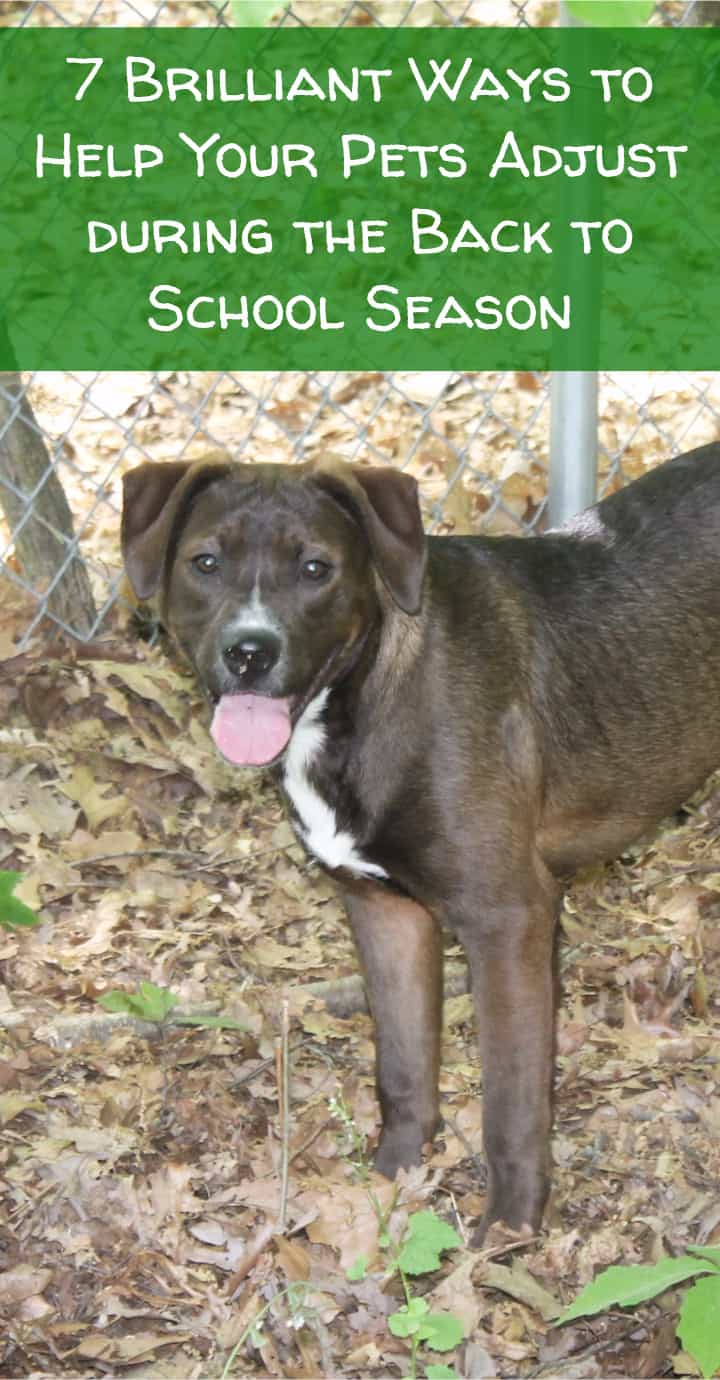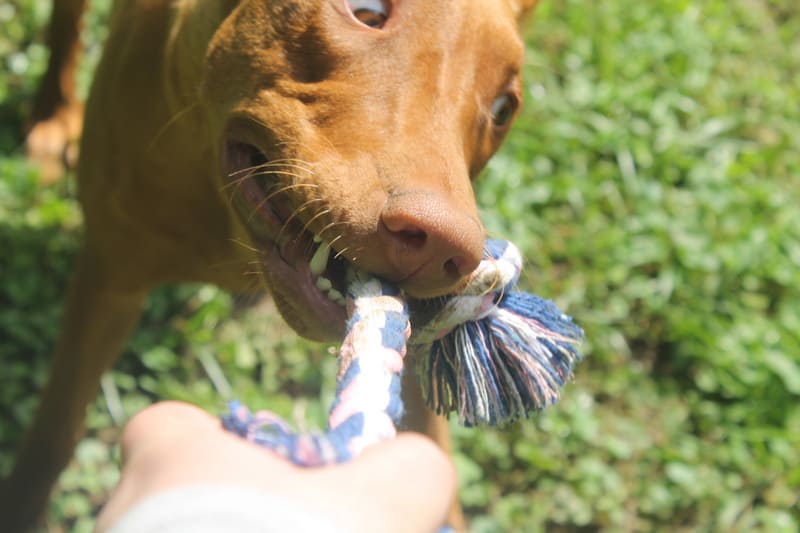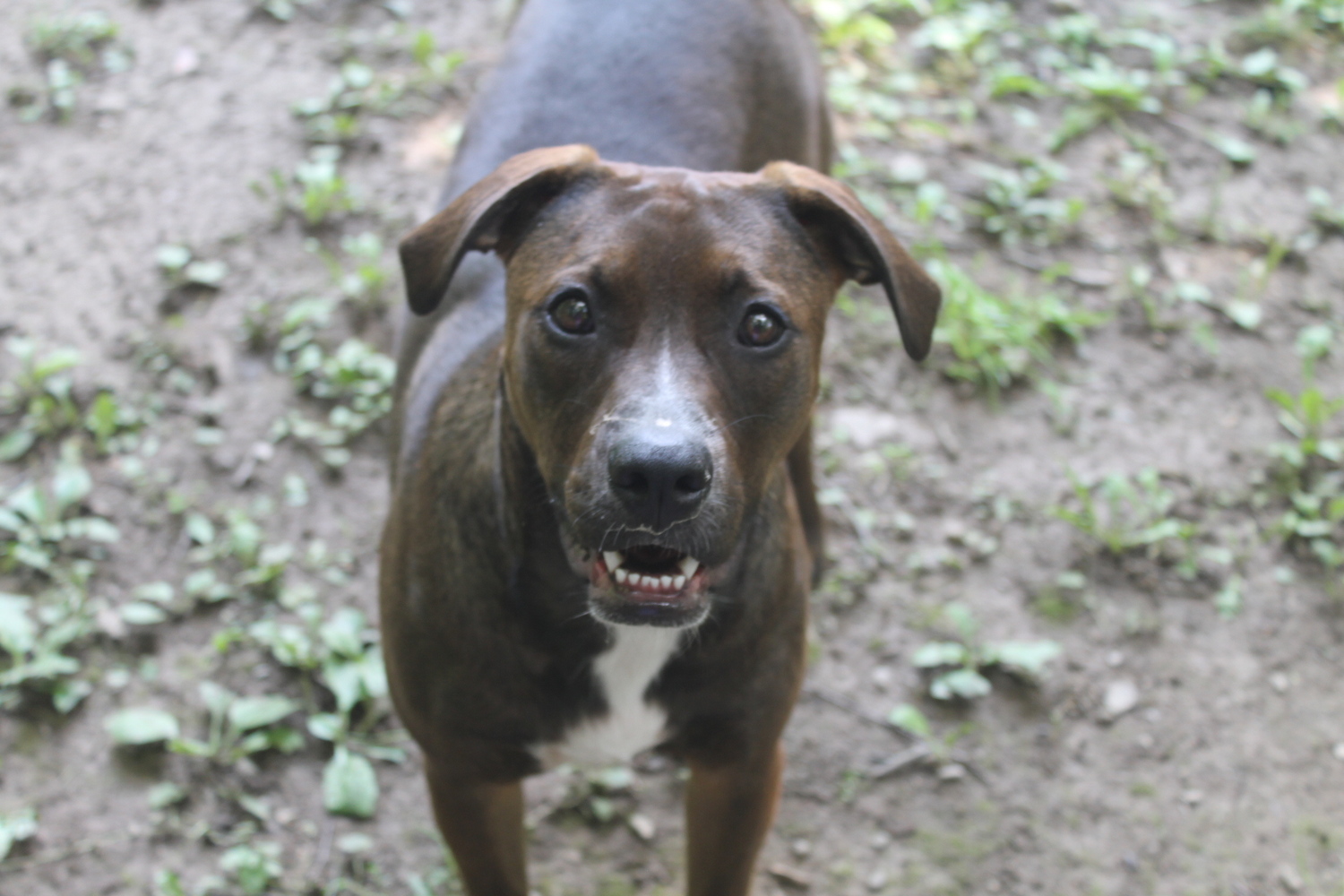Now that families are heading back to school and work, pets may start to feel lonely or experience separation anxiety when home alone. I’ve teamed up with Purina to share several tips on what pet owners can do to help address these issues in their pets.
Have you ever thought about back to school season from your dogs’ point of view? One day, their whole family is around to lather them with love and affection. The next, everyone is frantically rushing out the door at 7AM to catch school buses or avoid traffic. Even if you homeschool (or, in my case starting this year, cyber school), the whole mood changes in the house when the school season starts. Transitioning from work to play to work again is hard enough for adults and kids. Imagine how hard it is on your pets. Studies have shown that nearly 20% of the 80 million dogs in the U.S. have separation anxiety. For senior dogs, that number goes up to around 29 to 50 percent!
Fortunately, Dr. Kurt Venator, veterinarian and Ph.D., has some easy tips to help us offset the changes a bit and keep our pets healthy and happy during the transition. I’ve also included a few of my own tips for making back to school season as easy as possible on our beloved furry friends.
7 Ways to Ease Separation Anxiety in Dogs During Back to School Season
1- Set a consistent routine
Our pets thrive on routine, which is why it’s so hard when it suddenly changes. Dr. Vanator suggests setting a predictable and consistent back to school routine that includes leaving and returning home at the same time each day. If you think your dog can’t tell time, think again! Sure, he may not know that your kids walk through the door at precisely 4:15 every day, but he definitely has his own internal clock. When my boy Coop was still with us, he always knew when I was going to pick up his boy from the bus stop. I could come and go 20 other times throughout the day, but the moment I put on my shoes to head to the bus stop, his whole demeanor changed. I’m not saying you need to time your departures and arrivals down to the second, but definitely try to be as predictable to your dog as possible.
2- Schedule in quality time together
Part of your consistent routine should include plenty of quality time with your pooch. It could be a fun walk when you get home or a cuddle session at the end of the day. It gives your dogs (and you) something to look forward to and helps prevent them from feeling neglected. When we got Freya back in November, Jake was already deep into the school year, so she was used to him being gone all day. Jake always acknowledged the dogs when he walked in the door to let them know that he missed them too, then he’d do his own thing for a little while. Every day around 5, though, he’d come back downstairs and spend a good half-hour or more playing with Freya. Sometimes they ran around the back yard. Other days, they stayed inside and played tug games. To Freya, it didn’t matter what they did, as long as she got her quality time with him. Not only did it help Freya burn off some energy, but it got my son back into playing outside again. Win-win!
3- Play instead of punishment
Dr. Venator explains that pets show they are experiencing duress in different ways, including destructive behavior. If you suddenly notice that your previously well-behaved dog is now tearing your favorite shoes to shreds, turn to play instead of punishment. Rather than raising your voice and shouting “bad dog” (which, FYI, is NEVER a good idea), help your dog burn off some of that frustrated energy and channel it by engaging in a rigorous play session. When Freya starts acting out, we take her in the back yard and play “dot” with the laser pointer for a few minutes. She gets in a good run, then zonks out on the floor, leaving us with a little peace and quiet to finish up work or make dinner. Taking five minutes out to help your dog burn off energy makes a lot more sense than spending an hour chasing her around the house frantically shouting “what’s in her mouth? What is she chewing??”
4- Give them a special new toy
Pick up a special new interactive toy for your pets before school starts, suggests Dr, Venator. He goes on to say that the novelty and intricacy of the toy can help keep your pet occupied during alone time. I suggest taking it a step further. Put away the “alone time” toy when you get home and swap it out for a toy that you can play with together. Think back to the days when your kids were toddlers and you would rotate toys to keep them exciting and “new.”
As far as what type of toy to choose, Dr. Venator suggests chew toys for dogs and new scratching posts for cats. It really depends on your pet, though. I can’t leave Freya unattended with anything that can be chewed apart. She likes toys that challenge her. In fact, her favorite toy originally belonged to the cats! It’s one of those closed tracks with a ball that is virtually impossible to remove. She spends a crazy amount of time pushing the ball around the track. My cats have a special scratching post tower that we keep up off the floor (so Freya doesn’t eat it, because trust me, she will).
5- Soothe them with music
Set up a soothing playlist for your pets and turn it on while you’re away. Music not only promotes relaxation, but it also helps mask any strange or scary noises they may hear. I also read an interesting article recently that said dogs love audio books! I don’t know how true that is, but it’s worth a try. Again, go with something soothing. Before you invest, download a sample and see how your dog reacts to the narrator’s voice. Or better yet, record yourself reading a book for your dogs!
6- Consider setting up a 2-way doggy cam
Technology is great, isn’t it? Once upon a time, we’d have to rig up a complicated security system to peek in on our dogs throughout the day. Now, we can do it with an inexpensive camera and a smartphone app. Many cameras even let you talk to your dog from a thousand miles away! My aunt has a “doggy cam” set up in her house to keep an eye on her Irish Wolfhound and Border Collie on the days she works outside of the home. Guinness, her wolfhound, is particularly prone to separation anxiety. Sometimes your dog just needs to hear your voice to feel better.
7- Pay attention to your own energy
One of the best pieces of advice that I can offer is this: check your mood at the door. Bad days happen, but if you walk into the house ranting and screaming, stomping and slamming doors, it’s going to affect your dog. Remember, he’s been waiting all day for that magical moment when you walk through the door. It’s not fair to push him away or alter his routine just because you’re grouchy. How would you feel if you waited all day for your partner to come home and angrily shoved you aside when you tried to hug them? Dogs pick up on our energy even better than other people do. It’s not fair to subject them to our bad moods. Instead, stick to your routine and give your furry pal a cuddle. Not only is it better for him, but it’s a huge stress-reliever for you, too!
Purina aims to drive the health and well-being of pets so they can live bigger, healthier and happier lives together with their families. By following these tips, your dog will have a much easier time adjusting to a new schedule (and it might just help you adjust, too!). For more information on pet separation anxiety and how you can address it with your cat or dog, check out this article and be sure to tune in to Purina’s Facebook Live on this topic on Tuesday, August 29 at 12pm CT (that’s 1PM EST for those of us on the east coast).
How do you help your pets adjust to a new schedule? Share below!








I never thought about the pets when going back to school. I guess that would be hard for them too. I know our cats could care less about the kids but I’m sure the dog will need to adjust. I love the idea of giving them a new special toy to get them over the hump.
I’ve never considered the effect of back to school season on pets. I imagine it is difficult if your best bud is gone all day, though! I still have a few kids at home to play with our dogs, so they have not experienced that yet.
I’ll pass this along to my son and daughter-in-law. They have a puppy and our grand daughter will be going back to school on the 6th. About the only time our fur babies are alone is when we go to family dinner at my in-laws.
I didn’t know that animals got separation anxiety from school. Paying attention to energy is something that I forget about a lot since the morning time is so hectic. It’s understandable that would stress out our pet.
Such great tips. At our house we have three cats, two dogs, and our children are grown. We’re really luck to have a daycare for the puppies where they’re able to go for a few hours every afternoon. It wears them out and make them calmer and more mellow when we’re all home together. x
Great post! You know I never thought about our pets when the kids head back to school. But I guess it would make sense .Great tips too!
Wow, I neve considered how the quick change in routine can have an effect on pets! A friend of mine is a dog owner, so this will be most useful for her. I will definitely share this with her!
These are such great tips. Until our basset hound turned ten, and starting showing signs of stress due to her age, I had never thought about what back to school time does to her.
I think these are such great tips and such a wonderful topic to address. No one really thinks of the effects on pets when kids go back to school but I know it effects them, they are used to having the kids around and then all of the sudden they are alone all day!
I have a Jack Russel Terrier named Sadie and she suffers from separation anxiety. We have taken her on vacation with us because it is so bad. This year, we had a college student that we know really well come stay at our house the week we were gone. This worked really well. Keeping her in the environment where she is comfortable worked so well we will do this again next year.